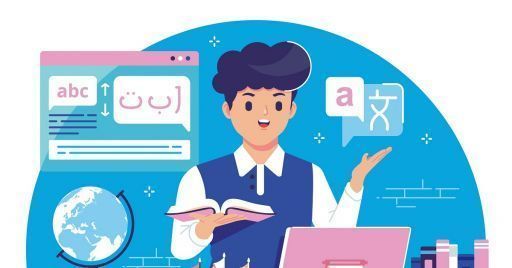

Multilingual online courses: the importance of localization
What does it mean to localize an online course and why is it important to do so if you want to reach an international audience?
Multilingual online courses: the importance of localization
What does it mean to localize an online course and why is it important to do so if you want to reach an international audience?
One of the main advantages of eLearning training is that it tends to reach a worldwide audience. This, however, only on condition that the courses are designed to be used in countries other than the country of origin.
Difference between translation and localization
To adapt a course to audiences of different nationalities, it is possible to choose two different ways: to translate or to localise the course.
Translation consists of reworking words from one language to another. Localising a course, on the other hand, means adapting it not only from a linguistic point of view, but also for all the cultural references it contains.
Although this is often underestimated, socio-cultural differences inevitably affect a whole range of elements used within the course, such as images, signs, formatting, etc. Localization therefore ensures that your course is not only understandable, but also culturally appropriate for the target audience.
What content needs to be localised?
To localise an online course, you will need to identify all the elements that could be influenced by the target culture and rework them by adapting them to the linguistic and cultural context of the target audience.
Verbal content
Whether written, audio tracks or video scripts, you will need to translate and localise all the verbal content of your course. Pay particular attention to idioms or references to local facts that may not be understood in other contexts.
Non-verbal content
There are many symbols and images that have the same meaning all over the world. However, there are others that need to be changed because of their connotations in different cultures. For example, the icon of the hand with the thumbs up, traditionally considered a gesture of approval, is an insult in Iran. Or, again, the Ok sign made with thumb and index finger together is an offensive gesture in Brazil.
So be sure to analyse all the visual elements of your course, including those you consider neutral or universal.
Elements of the user experience
In addition to the strictly didactic content, you will also have to adapt all the elements related to the user experience: navigation buttons, progress bars, course layout, etc. For example, in the case of languages in which the reading direction proceeds from right to left (Arabic or Hebrew), the sequence of buttons, icons and images must be reversed.
You may also need to change the colour scheme of the graphics. For example, Westerners think that the colour white is clean and tidy. In some Asian countries, however, white means death and brings bad luck to the viewer.
Formatting
Finally, think of seemingly secondary elements that are inevitably influenced by culture: the date and time format, units of measurement, currency, address and telephone number format, etc.
5 steps to localize an online course
As we have seen, the elements to be taken into account to locate an online course are many and complex. For this reason, it will be essential to proceed in steps, paying particular attention to each of these phases:
Evaluation
Analyses all course material not only from the point of view of content, but also with regard to the layout and graphic elements used. To do this, rely on a native speaker collaborator who can easily identify all the elements that need to be adapted.
Preparation
Extract text from files, including any images, videos, audio tracks, etc. Also include time notes to guide the speakers through the recording phase.
Translation
Translate and locate all collected texts. In this case rely on mother-tongue translators who can pick up any nuances or references that will need to be adapted.
Publication
Load new materials (audio recordings, text transcriptions, visual elements, etc.) and synchronize them within the modules. Make sure that each element works correctly.
Final check
Entrust the final revision to an expert native speaker who can verify both the synchronisation of the materials and their correct location.
Translated with www.DeepL.com/Translator